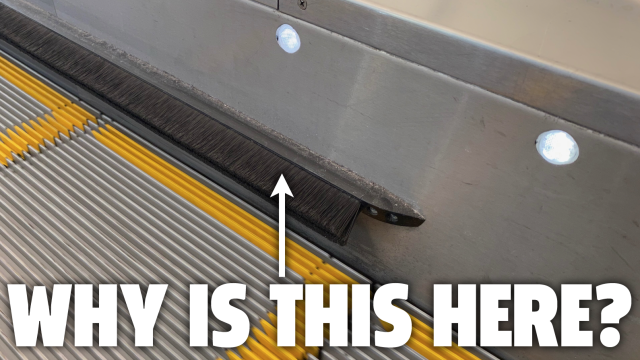I understand that escalators aren’t technically vehicles. I think elevators are, at least as much as a cable car or a funicular is, but escalators are more like motorised architectural elements. Still, we use them for diagonal transport quite often, and as I have been in a bunch of airports recently, I’ve spent a lot of time on escalators lately. And every time I’m on one, my foot is drawn to that band of stiff brushes along the lower edge of the escalator. What are those brushes for? Why are they there? Let’s look into the mind of God (or, some sort of escalator documentation, same diff) and find out.
We all know about those brushes, right? I don’t think they’ve always been on escalators, as I don’t recall them being that common in my childhood, but nearly all modern escalators have them today.
The brushes are technically called “skirt deflectors” or “skirt deflector brushes” and the “skirt” that the escalator people are talking about aren’t the garment type, but rather this part of an escalator:
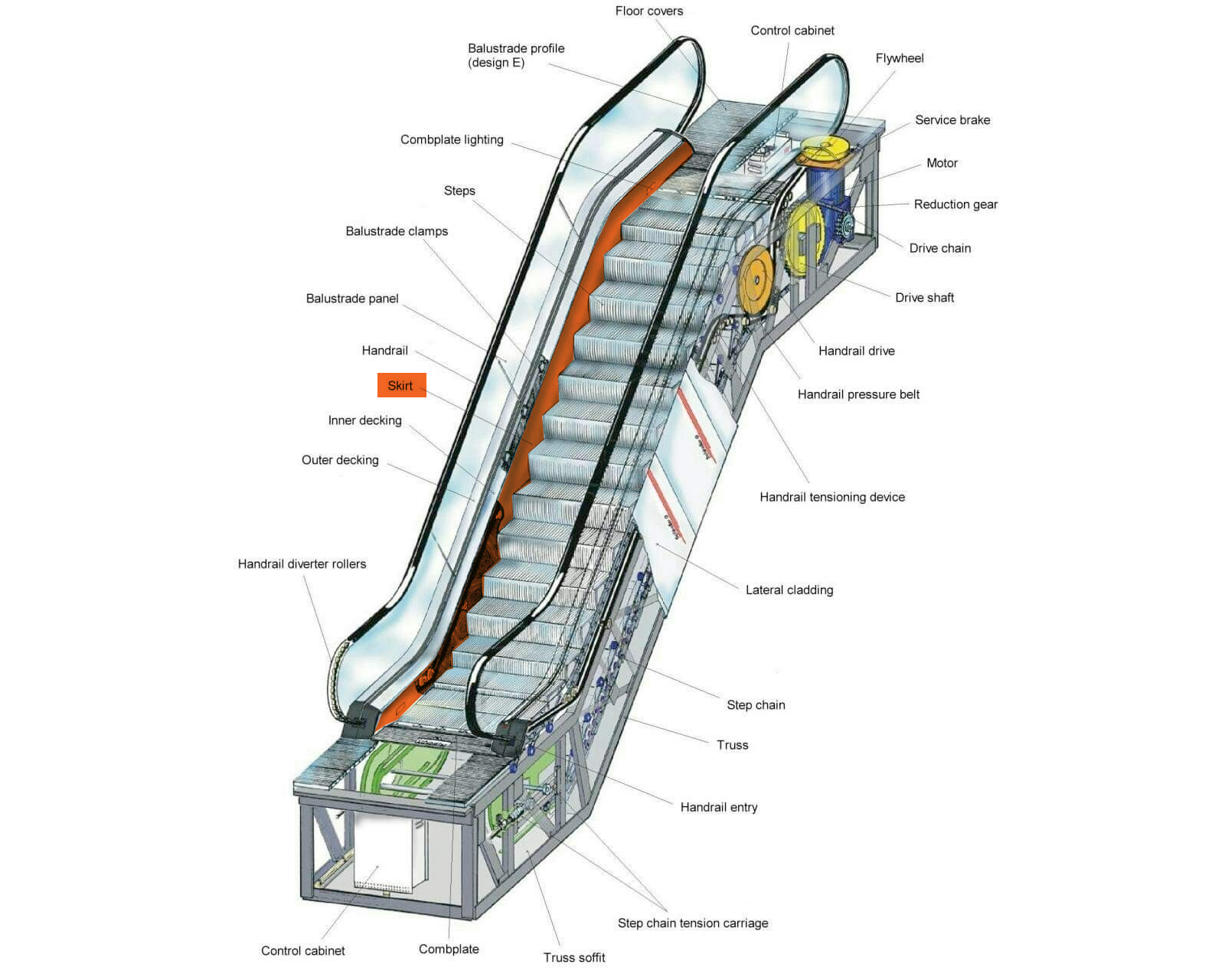
The “skirt” of an escalator is that vertical metal panel that separates the moving stairs from the sides of the unit, a place where a small gap exists.
On an escalator, any sort of gap is considered a safety risk, mostly because of the fundamental nature of escalators themselves. As tame as they usually are when we encounter them, it’s sobering to realise that an escalator has the potential to be a wildly destructive machine.
You get an idea of this when you look at the original patents for escalators, which are likely much older than you think — the first one was patented in 1859 by Nathan Ames, who called the invention “Revolving Stairs”:
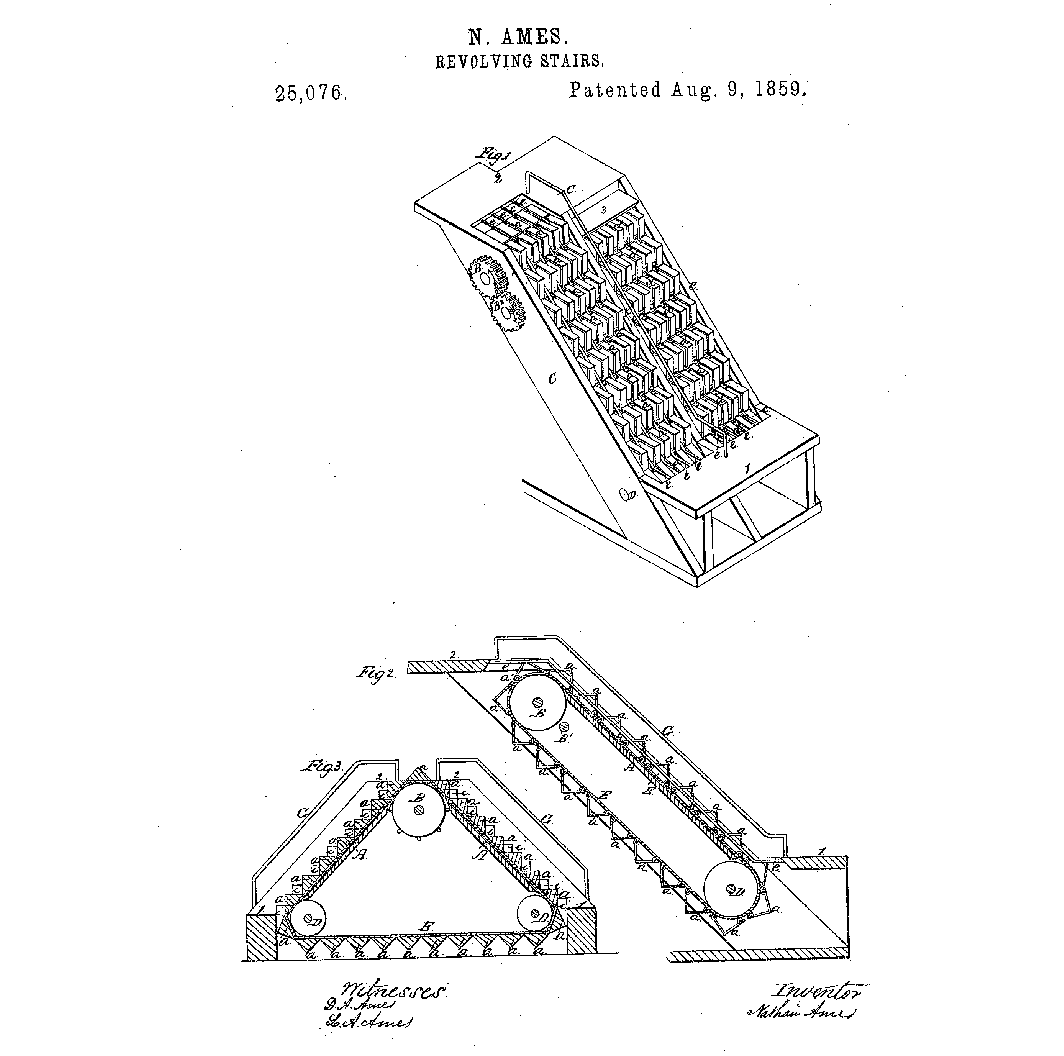
While modern escalators are much more refined and not powered by steam, the basic principle of a chain of grooved metal steps revolving around and around, sliding against one another, hasn’t really changed. It’s also not that different than those trash-destroying machines with the intermeshed metal rollers:
Of course, it’s not the same as this, but were you unfortunate enough to get anything attached to you caught in the stair-chain mechanism of an escalator, the results would unfortunately be not too dissimilar.
As a result, escalators are jam-packed with safety equipment, including all kinds of sensors and automatic shutoff switches and warning labels and, yes, those brushes.
So, the main goal of the skirt deflector brushes is to deflect things — like your feet, hands, pant legs, and yes, even long, flowing skirts, from the skirt of the escalator, to get you and your bits away from a potential gap where something could get caught.
To put it in a familiar automotive context, think about how old Volvo 240 automatic shifters used a similar approach to deflect crumbs and insects and whatevers from the inside of the shift mechanism:
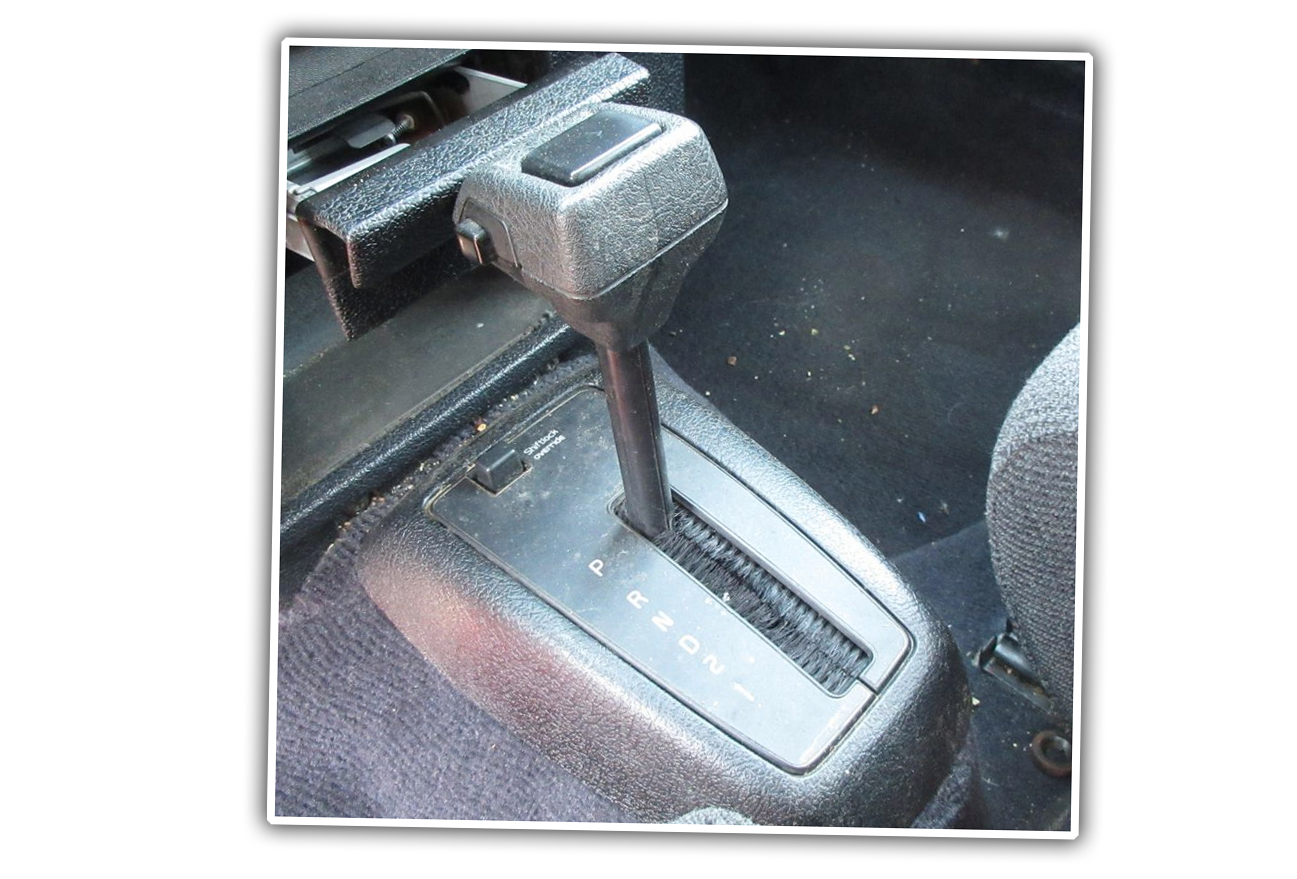
Here’s how escalator manufacturer Schindler describes it:
Schindler escalator skirt deflector brushes —
a proven safety upgrade
Entrapments involving the gap between the stationary skirt panels and the moving steps on escalators can cause serious injuries and the Schindler Escalator Skirt Brush helps reduce the chance of step-to-skirt entrapments.
While newer escalators are designed to very tight tolerances to help minimise that gap, the surest way to avoid step-to-skirt accidents is to try to keep shoes, feet and hands from getting near the gap in the first place. That’s why the escalator skirt brush makes so much sense.
How it works
The skirt brushes are mounted on the sides of the escalator, just above the moving steps. A continuous length of bristles projects out from the skirt, gently deflecting and guiding riders away from the step-to-skirt gap. The brushes are made with durable monofilaments, and provide a soft surface to warn passengers and encourage them to keep away from the extreme sides of the step.
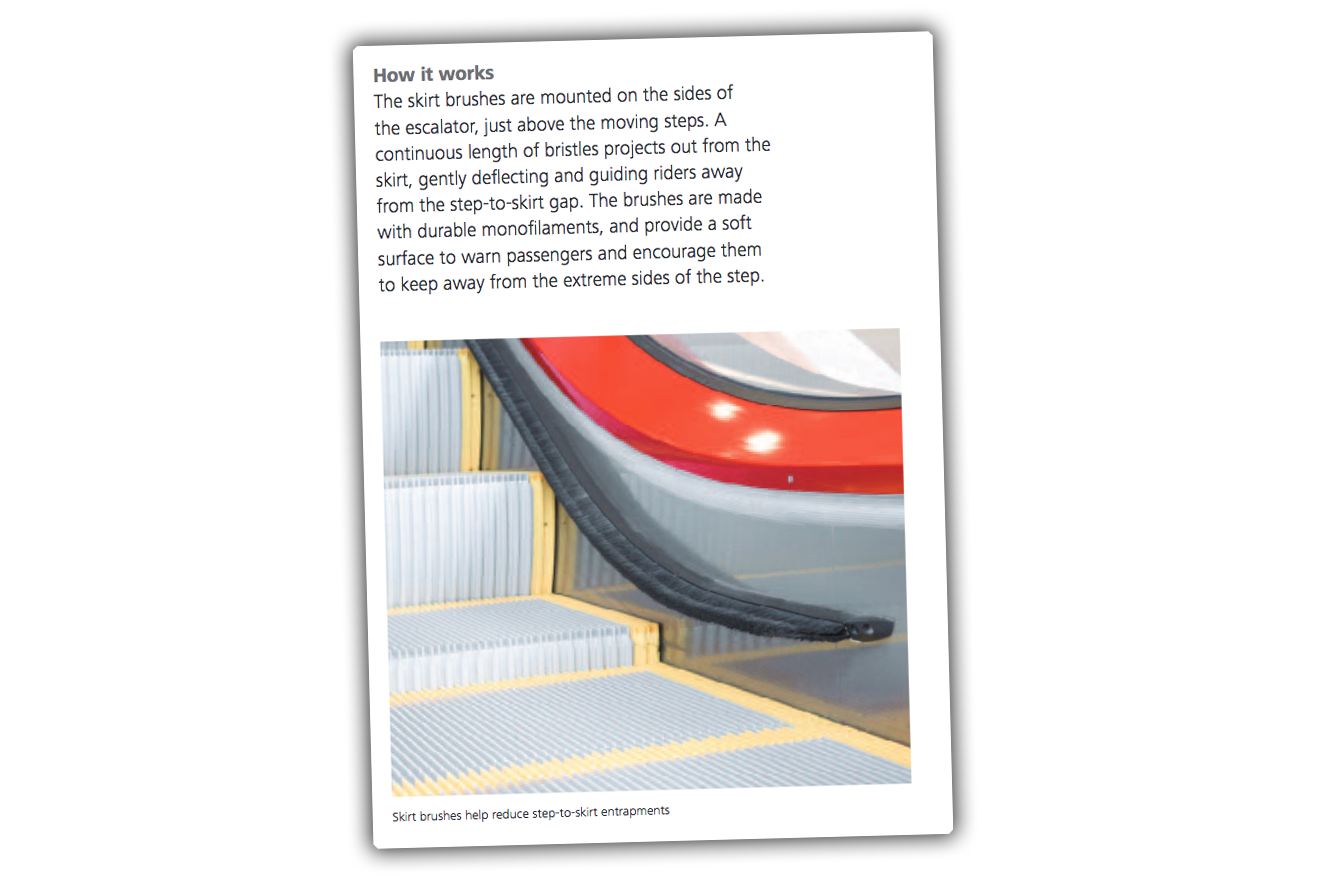
These skirt deflectors are required in Europe and seem to be commonly required — or at least encouraged — in U.S. states. Here’s a sample of one state’s detailed description for these devices:

Damn. They’re not kidding around.
So, the stated goal of these are essentially to keep people from standing too close to the skirt, for safety reasons. The fundamental problem here is that — and while it’s possible I’m the only person behaving this way, but I doubt it — these brushes make me want to stand closer to the skirt, because I like to do this:
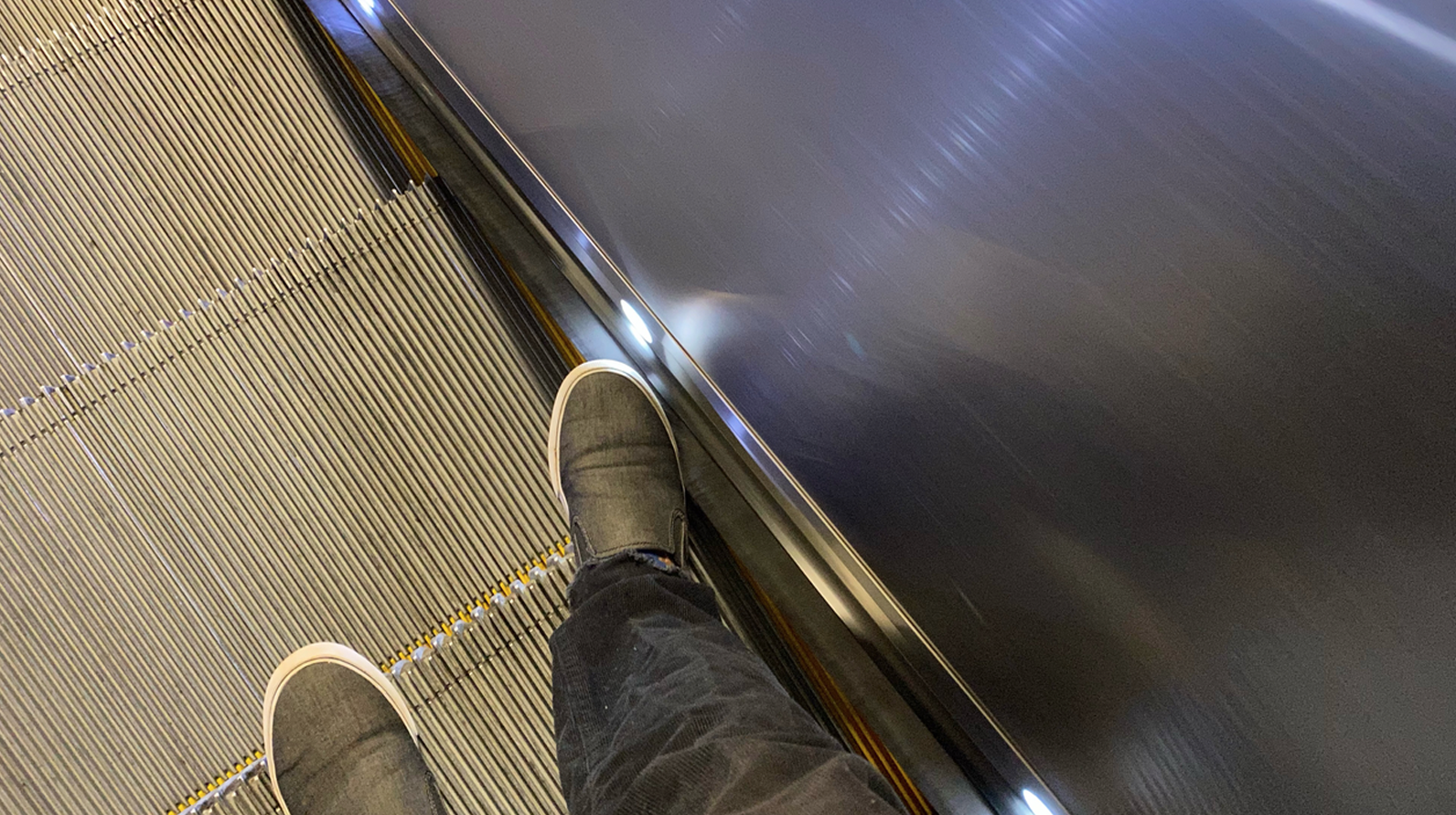
I directly contact my foot to the brush, because I kind of like how it feels, and it acts as a way to clean off my shoes. In fact, I’ve spoken to people about these brushes who genuinely believe that they’re there to act as shoe cleaners, a little complementary service provided by the ever-generous escalator manufacturer.
Of course, having contact with the brushes absolutely defeats their purpose, as my feet are now exactly where the escalator manufacturers do not want them to be, right by the skirt.
Is it just me who does this? It can’t be. Maybe escalator companies need to come up with some deflection material less appealing than that satisfying sort of moving stiff brush, which for one of those ineffable sensory reasons feels great.
Maybe some grippy rubber strip that makes an unpleasant screeching sound when it rubs against you? Or what about just a simple hard plastic ledge? Does it need to be quickly removable for service or emergency reasons? If so, then that may not work.
I get the point and goal of the brushes now, I just think they may tend to be more of a lure than the escalator designers realise.
I’m curious to hear if anyone else’s feet are as attracted to these things as mine seem to be, so tell me in the comments. And, I hope if you did think they’re for shoe-cleaning, you’ll do your best to find some other means of shoe-hygiene.
